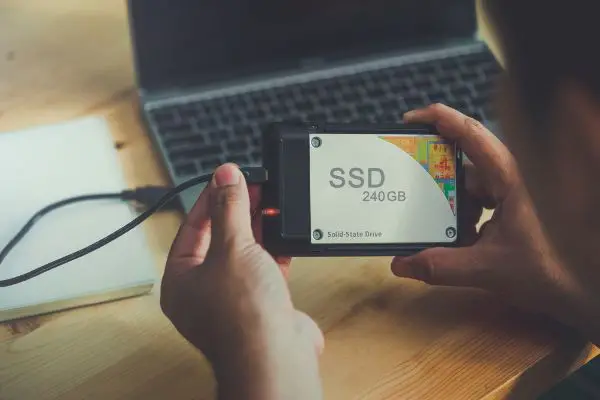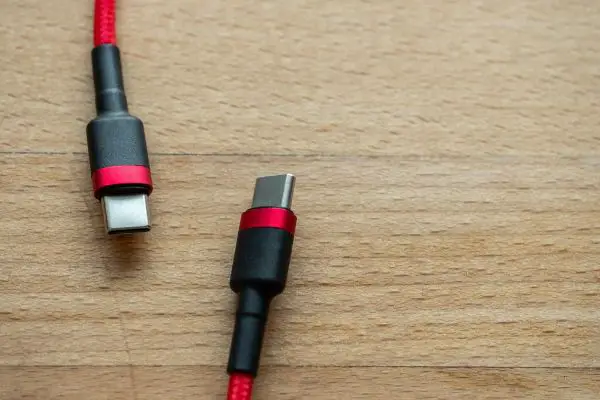Disclaimer: This post may contain affiliate links, meaning we get a small commission if you make a purchase through our links, at no cost to you. For more information, please visit our Disclaimer Page.
External SSDs are becoming more popular as storage devices because of their fast speeds. However, there is some concern that the performance of an external SSD may be decreased when it is connected to a USB port.
Most SSDs are designed to transmit data much faster than USBs. However, you need to understand that some USBs can also transmit data faster than SSDs. As such, it’s safe to say that the performance of an external SSD can always be decreased by USB, depending on the type you’re using.
Table of Contents
Can I use SSD through USB?
Solid-State Drives (or SSDs) are known for their ability to provide internal storage within a computer. However, you need to understand that there’s more to what you can use these devices for than just for internal storage.
You can also use your SSD as external storage for your computer. Yes, with the device, you can always store files. With external storage, you can easily backup and transfer files from your computer to another one.
There are several ways that you can use an SSD with your computer.
One of them is by connecting the device through a USB; this is very possible if you’ve converted the drive to an external storage device or if you buy an external SSD with a USB port.
All you need is to get an enclosure, which comes installed with USB-A or USB-C connectors – depending on what your computer supports.
SSDs are pretty fast, no doubt about it. However, you need to understand that the performance of your SSD will, to a large extent, be limited to the maximum performance of the USB connection.
Here’s how to connect SSDs through a USB
As mentioned earlier, you need a reliable enclosure to be able to use your SSD through a USB. If you’re having difficulty finding the right enclosure, you can always check here. (Amazon Link)
Interestingly, the USB-C external drive enclosures on this page are pretty much reliable and work well with the traditional 2.5-inch SSDs and hard drives.
After getting the enclosure, what’s next? It’s very simple; first, you must start by opening the case. After that, plug the bare drive into the SATA connector and close the case again.
Does USB decrease the performance of an external SSD?
As previously mentioned, USB can always affect an external SSD’s performance. However, you must understand that it doesn’t happen in all cases.
Here’s the thing; all SSDs and USBs aren’t created the same way. Some SSDs are very powerful and can transmit data pretty faster than many USBs can do.
However, you need to understand that there are some USBs out there too that are very fast when it comes to transmitting data.
Let’s use SSDs and USB 3.0 as an example. In this case, most SSDs can operate faster than the USB 3.0 interface. Since that’s the case, it means the USB can always slow down the performance of the SSD.
This explains why people are advised to use eSATA to connect the SSD instead of USB 3.0.
There are a couple of differences between both SATA and USB. While you can use both as connectors for your SSDs, you need to understand that eSATA is much faster than USB 3.0.
According to some experts, eSATA has a theoretical connection limit of 6 Gigabits per second. Some SSDs are even capable of delivering up to 12 Gigabits per second. As for its counterpart (USB); it only has a theoretical connection limit of 5 Gigabits per second.
The bottom line is that USB can always decrease the performance of your SSD. However, you need to understand that the effect will certainly not be noticeable by you when using your computer.
The effect is only noticeable theoretically; it’s often insignificant practically.
Is USB 3.0 fast enough for External SSD?
Before addressing this question, let me start with this one – how fast are USB 3.0 and SSDs?
According to theories, the transfer speed of USB 3.0 is approximately 5 Gigabits per second. As for SSDs, the theoretical transfer speed varies – usually between 6 Gigabits per second to 12 Gigabits per second.
Based on that, it’s safe to say that external SSDs are much faster than USB., at least in theory. However, in practice, a USB with the speed of 5 Gigabits per second is fast enough for an SSD with a theoretical speed of 6 Gigabits per second.
The problem lies if the SSDs have a high speed, let’s say 12 Gigabits per second. Here, the USB could affect the performance of a solid-state drive. This explains why USB 3.0 isn’t always considered fast enough for SSDs in all cases.
The bottom line is that USB 3.0 is not fast enough for external SSDs in all cases. For instance, if the SSD has a transfer speed of 12 Gigabits per second, your USB 3.0 will not be fast enough.
Is USB-C fast enough for SSD?
There are several types of USB-C out there. So, to answer this question; w’ll say how fast a USB-C will be for an SSD depends on a couple of factors, such as speed, power, and protocol capabilities.
Speaking of speed; a USB-C cable with 3.1 Gen 2 capabilities certainly has a higher transfer speed than one with 2.0 capabilities. As such, they won’t have a similar performance effect when used for SSDs.
Here’s the thing; USB-C 2.0 can only deliver a theoretical transfer speed of 480 megabits per second. As for USB-C 3.0, you can expect it to deliver up to 5 gigabits per second.
A USB-C 3.1 (Gen 1) will also deliver 5 gigabits per second theoretical transfer speed. As for USB-C 3.1 (Gen 2), the transfer speed is 10 gigabits per second.
As you can see above, USB-C is of different types. The simple and direct answer is no if you’re referring to the 2.0 version. A USB-C 2.0 will be very slow for SSDs.
As for USB-C 3.0 and USB-C 3.1 (Gen 1), we’ll only say they are fast enough for SSDs with a transfer speed of 6 gigabits per second.
That means these USB-C cables are certainly not fast enough for SSDs with a transfer speed of 12 gigabits per second. USB-C 3.1 has a speed of 10 gigabits per second, so it’s fast enough for all kinds of external SSDs.
Can a USB 3.0 external SSD be faster than an internal laptop HDD?
A USB 3.0 external SSD has a faster transfer speed than an internal laptop HDD. Apart from that, the configuration of the USB 3.0 external SSD is another thing that gives it an edge over your internal laptop HDD.
The bottom line is that a USB 3.0 external SSD can certainly be faster than an internal laptop HDD. That’s possible because of its fast transfer speed and configuration.


